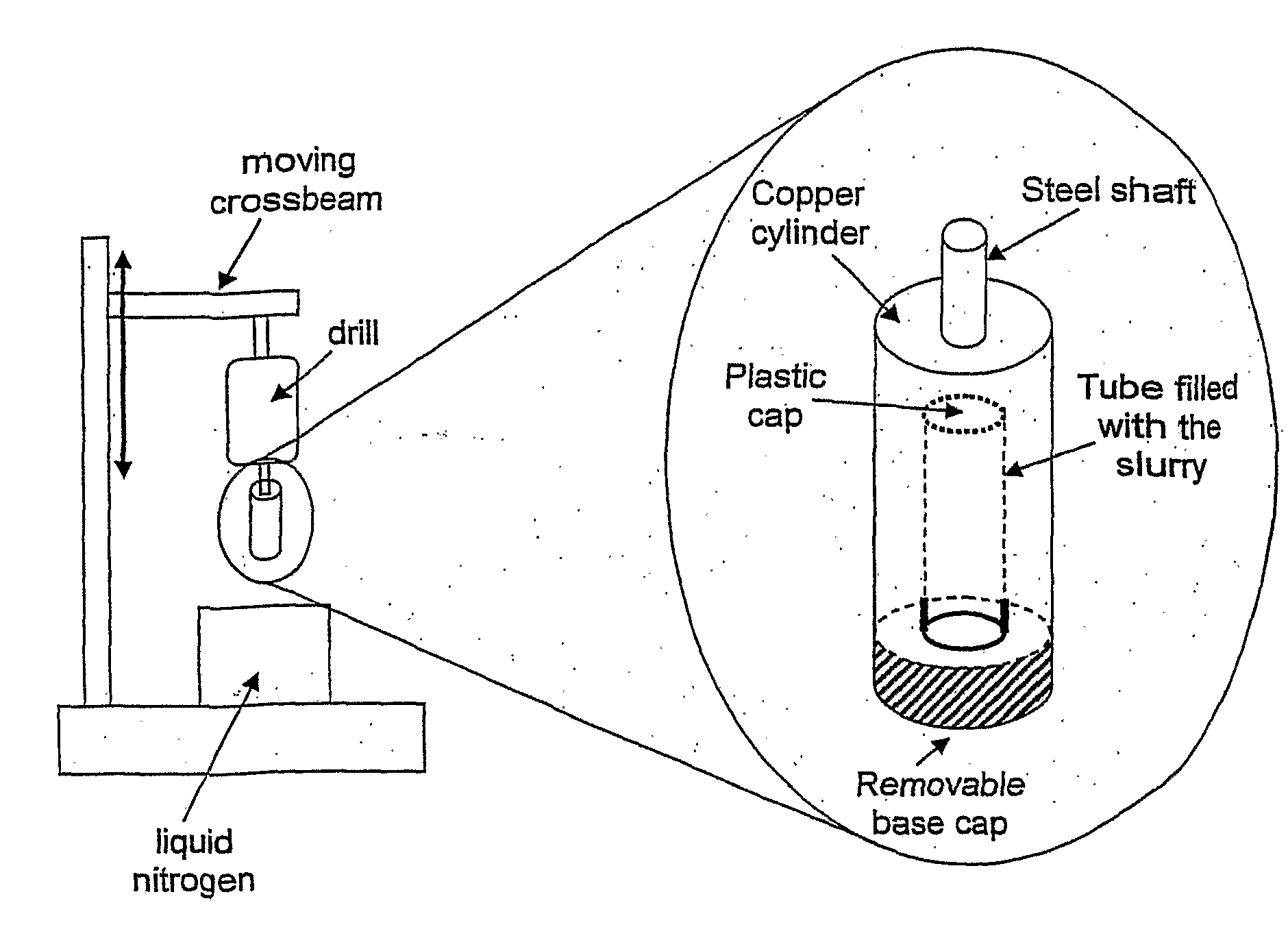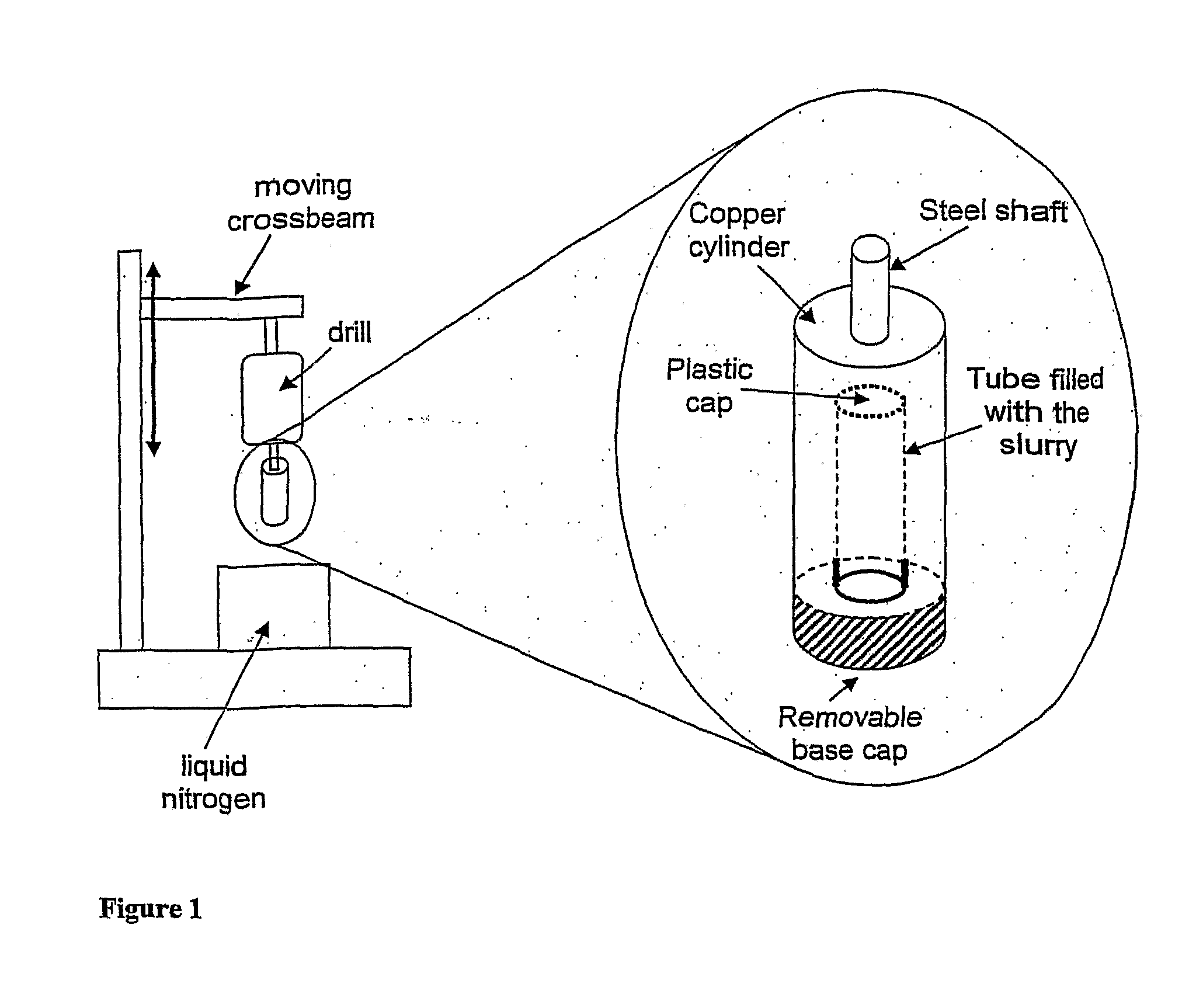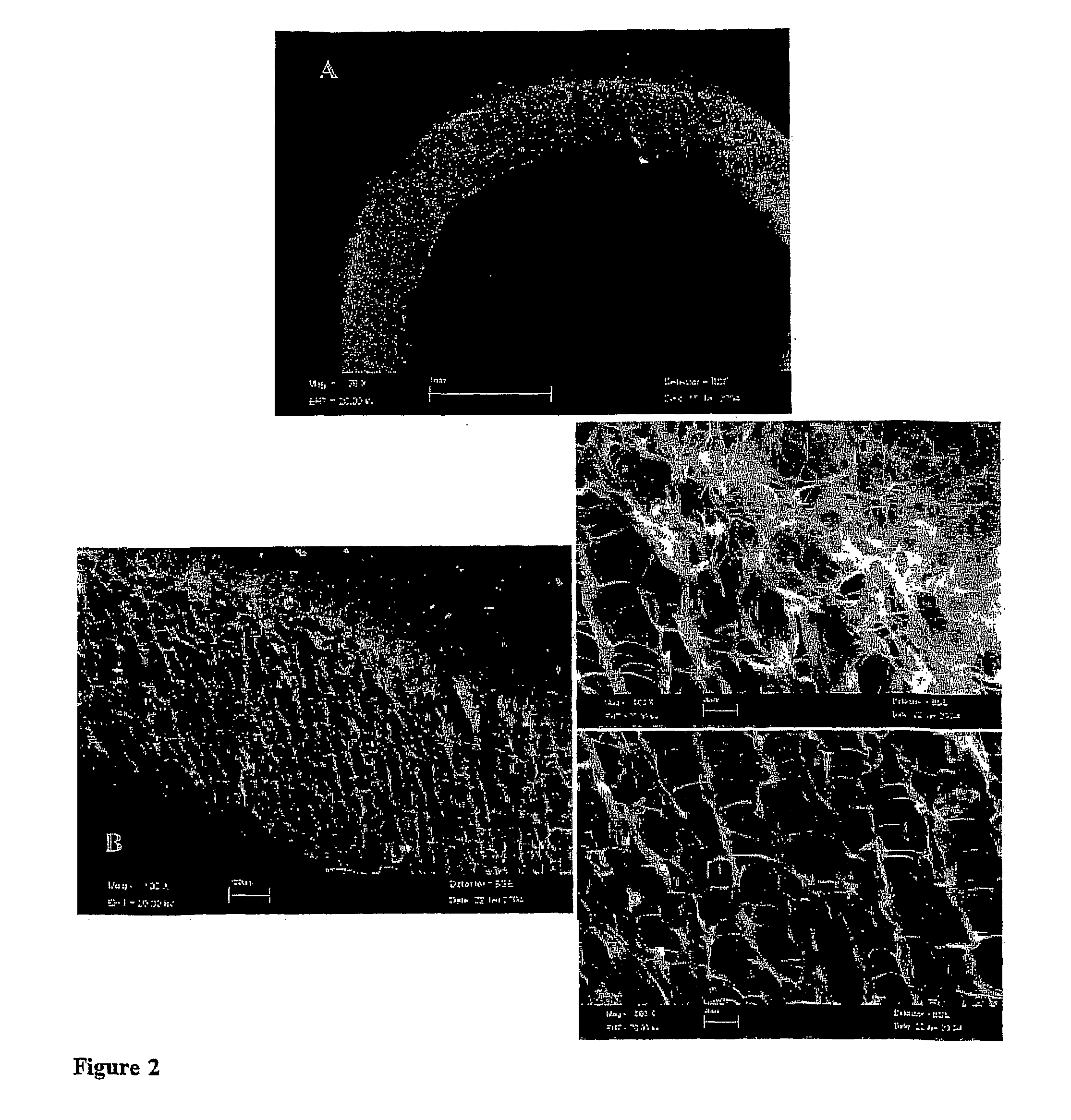Novel Technique to Fabricate Molded Structures Having a Patterned Porosity
a molded structure and porosity technology, applied in the field of new molded structure fabrication techniques, can solve the problems of complex tubular molds, limited mold dimensions, and limited pore size and number,
- Summary
- Abstract
- Description
- Claims
- Application Information
AI Technical Summary
Benefits of technology
Problems solved by technology
Method used
Image
Examples
example 1
[0035]A suspension of type I collagen (0.5% w / v, acetic acid (0.05 M)) and chondroitin 6-sulfate (0.04% w / v) (a member of the glycosaminoglycan-GAG-family), was injected into a polyvinyl chloride (PVC) tube. The PVC tube was inserted into a hollow copper cylinder, with an internal diameter slightly larger ( 1 / 32″) than the external diameter of the PVC tube. The cooper mold (FIG. 1) was fabricated such that the bottom of the cylinder was threaded and could be sealed with a copper plug that was screwed into the tube; the top of the copper mold was sealed with a hardened steel rod.
[0036]The copper cylinder was held in place using the hardened steel plug in a mechanism able to spin the mold along its axis at a high rotational velocity (30,000 rpm) in air at room temperature for 15 minutes. During the spinning, the solid (collagen and GAG) and liquid (water and acetic acid) phases in the slurry underwent differential sedimentation along the cylinder radius; at the end of the spinning pro...
example 2
[0040]The same collagen-GAG suspension as in Example 2 was used in a second experiment, where all conditions were kept constant except for the spinning velocity, which was changed from 30,000 rpm to 5,000 rpm, the spinning time prior to freezing, which was changed from 15 to 5 minutes, and the spinning time in liquid nitrogen, which was changed from 2 minutes to 1 minute.
[0041]The external tube diameter of this tube remained constant compared to Example 1, while the internal diameter was considerably smaller due to the slower spinning velocity and reduced spinning time (smaller sedimentation effect). This tubular structure also displayed a radially aligned pore structure throughout the tube wall as well as a cell-impermeable membrane, although of reduced size, around the outer edge of the tube wall (FIG. 3).
example 3
[0042]The same procedure and the same collagen-GAG suspension was used as in Examples 2 and 3 only, in this case, the spinning time in air was changed from 5 minutes to 1 minute. The spinning velocity was 5,000 rpm and the spinning time in liquid nitrogen was 1 minute, as in Example 3.
[0043]Using this procedure, a porous cylinder was obtained; the sedimentation effect associated with the spinning was not great enough to create a complete separation between the solid and the liquid phase inside the cylinder, and thus the tube formation after freeze-drying. Instead, a complete cylinder of material was produced that maintained the radial alignment of pore structure observed in Examples 2 and 3 (FIG. 4).
PUM
| Property | Measurement | Unit |
|---|---|---|
| Vacuum pressure | aaaaa | aaaaa |
| structure | aaaaa | aaaaa |
| densities | aaaaa | aaaaa |
Abstract
Description
Claims
Application Information
 Login to View More
Login to View More - R&D
- Intellectual Property
- Life Sciences
- Materials
- Tech Scout
- Unparalleled Data Quality
- Higher Quality Content
- 60% Fewer Hallucinations
Browse by: Latest US Patents, China's latest patents, Technical Efficacy Thesaurus, Application Domain, Technology Topic, Popular Technical Reports.
© 2025 PatSnap. All rights reserved.Legal|Privacy policy|Modern Slavery Act Transparency Statement|Sitemap|About US| Contact US: help@patsnap.com



